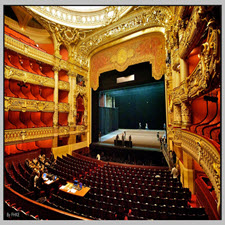توضیحات
ABSTRACT
The great substantial art exhibition held on Persian Gardens at Tehran Museum of Contemporary Arts in 2004 and registration of Persian Gardens on the list of UNESCO World Heritage in 2011, make it opportune to refer to a vital significant point hidden from the eyes of researchers of the subject so far: Persian Garden is the manifestation of a wisehumanist process with its form and geometry naturally following this process. As the result, the garden finds a destiny shared with those who use it. Thus the wiser is the design of the fate and destiny of the garden, the more extensive will be its interaction with the users. On entering a Persian Garden, the users will have all their senses, including their faculty of imagination aroused and inspired with the result that knowingly and unknowingly, consciously and unconsciously, the rhythm of their whole being will harmonize with that of the nature and in this way it is transformed, renewed and refreshed (frashkard).
INTRODUCTION
As a process of an extensive vast complex, Persian Gardens speak of good-mannered persons who created them and through that a signature as transparent and radiant as good mannerism and wisdom appeared under their cultivation which is in fact what grants them such a lofty place. According to the beliefs of constructors, good manner is the result of good thoughts, good words and good deeds; which in itself is a reasonable answer to the two questions: Should the garden be Persian or the approach to the garden? The third question which arises is: how much the name and qualities of the Persian Garden is indebted to the worldview of long-gone people who created them? First of all, it is necessary to explore the meaning of the name (Persian Garden, Paradise, Ferdos, a symbol of Eden). In recent eras, Persian garden is introduced and defined as an earthly symbol of the heavenly world. What has brought about such a surmise is the word Pardis, Paradise and Ferdos now known as Heaven, Eden.
چکیده
نمایشگاه بزرگ هنری برجسته در باغ های ایرانی در موزه هنرهای معاصر تهران در سال 2004 و ثبت نام باغ های ایرانی در فهرست میراث جهانی یونسکو در سال 2011، مناسب برای اشاره به یک نقطه قابل توجه مهم پنهان از چشم محققان موضوع تا کنون: باغ ایرانی، ظهور یک فرآیند عاقلانه با شکل و هندسه آن است که به طور طبیعی به دنبال این روند است. به عنوان نتیجه، باغ پیدا می شود سرنوشت مشترک با کسانی که از آن استفاده کنید. بنابراین عاقل تر، طراحی سرنوشت و سرنوشت باغ است، تعامل آن با کاربران بیشتر خواهد بود. با ورود به باغ فارسی، کاربران تمام حس خود را از دست می دهند، از جمله توانایی تخیل خود، باعث ایجاد و الهام بخشیدن به نتیجه می شود که به صورت آگاهانه و ناخودآگاه، آگاهانه و ناخودآگاه، ریتم تمام موجودات خود با طبیعت هماهنگ می شود و در این راه آن را تغییر داده، تجدید و تجدید (frashkard).
مقدمه
باغ های فارسی به عنوان یک فرایند پیچیده وسیع و فراگیر، باغبان های نابغه ای که آنها را ایجاد کرده اند و از طریق آن امضای شفاف و پرتلاطم به مثابه شیوه ای خوب و حکمت تحت ظهور آنها ظاهر می شوند و این همان چیزی است که آنها را به چنین موقعیتی عالی می دهد. با توجه به اعتقادات سازندگان، شیوه خوب نتیجه افکار خوب، کلمات خوب و اعمال خوب است؛ که به خودی خود یک پاسخ منطقی به دو سوال است: آیا باغ باید فارسی یا رویکرد به باغ باشد؟ سوال سوم این است که: چقدر نام و کیفیت باغ پارسی به جهان بینی افراد فقیر که آنها را ایجاد کرده اند، مستبد است؟ اول از همه لازم است که معنی نام (باغ پارسی، بهشت، فردوسی، نماد عدن) کشف شود. در دوره های اخیر، باغ ایرانی به عنوان یک نماد زمینی از جهان بهشت معرفی و تعریف شده است. آنچه این چنین برداشت کرده است واژه “Pardis”، “Paradise” و “Ferdos” در حال حاضر به نام Heaven، Eden شناخته می شود.
Year: 2012
Publisher : TAVOOS QUARTERLY
By : Khoobchehr Keshavarzi
File Information: English Language/ 10 Page / size: 706 KB
Only site members can download free of charge after registering and adding to the cart
سال : 1391
ناشر : TAVOOS فصلنامه
کاری از : خوبورچهر کشاورزي
اطلاعات فایل : زبان انگلیسی / 10 صفحه / حجم : KB 706


![Persian Garden[taliem.ir]](https://taliem.ir/wp-content/uploads/Persian-Gardentaliem.ir_.jpg)





![Music to the ears of the post-war avant garde[taliem.ir]](https://taliem.ir/wp-content/uploads/Music-to-the-ears-of-the-post-war-avant-gardetaliem.ir_-150x150.jpg)
![Cinema of the Future[taliem.ir]](https://taliem.ir/wp-content/uploads/Cinema-of-the-Futuretaliem.ir_-150x150.jpg)
نقد و بررسیها
هنوز بررسیای ثبت نشده است.